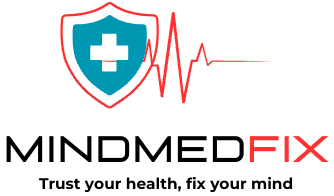In a culture where innovation and forward thinking are so prized, America still has a stubborn problem: stigma around mental illness. Even with more knowledge and increasing conversation about mental illness, stigma is still a major barrier to access to treatment and recovery for mental health care for dozens of millions of Americans. Why—and more importantly, how do we sort it out?
This paper analyzes the history of mental health stigma in the USA; how it still exists today; its effect on individuals and communities; and evidence-based strategies to decrease it.
Understanding Mental Health Stigma
Mental Health Stigma is negative thoughts, feelings, and behaviors about people who suffer from mental illness. Stigma exists in so many ways—social rejection, discrimination, internalized shame, and system-level barriers to treatment—and seeps into virtually every area of life: work, school, and access to mental health treatment. Stigma is commonly categorized into three:
1. Public stigma: Social views that characterize mentally ill people as “dangerous,” “weak,” or “incapable.”
2. Self-stigma: Shame, inadequacy, or embarrassment regarding having one’s own mental illness.
3. Institutional stigma: Policies or systems that intentionally or unintentionally restrict opportunities and resources for individuals with behavioral health disorders.
Why Is Stigma of Mental Health Still Ongoing?
1. Misconceptions and Media Influence in the Past
The history of mental illness stigma in the USA is filled with dangerous tradition and misunderstanding. In the early part of the 20th century, mentally ill people were usually institutionalized in deplorable living standards. Although psychiatric therapy has made advances, these old traditions have left a persistent cultural stain of fear and misconception.
The media influence on mental illness stigma is ongoing; film, television, and the news media have portrayed mental illness as unpredictable or violent to some extent over history. Images such as those propagate public misconception and fear.
More recent research conducted in 2023 found that almost 40% of instances of mental illness on popular streaming programs involved violence, even though most people with mental illness are not violent.
Moreover, media hype propagates unsubstantiated assumptions. Sensational front-page headlines scream about violent crime by the mentally ill—rarely occurring that skews the public’s view. Conversely, day-in-day-out stories of recovery and resilience never hit the front page.
2. Mental Health Illiteracy
Most Americans are still poorly informed about mental illness. There are still myths—e.g., that depression or anxiety are the product of personal weakness—fostering ignorance leading to stigma and discouragement from treatment.
NAMI learned in a 2023 study that almost 60% of Americans feel that individuals with mental illness are discriminated against by society; yet only 30% feel that stigma plays a major role in healing. That inconsistency shows how much mental health education is needed to end stigma.
In 2024, certain California and New York school districts initiated pilot programs of teaching mental health literacy starting in grade school—an effort set to be expanded nationwide.
In addition, mental health literacy is not necessarily learning about disorders—learning where and how to seek help. It works especially well for underserved groups who might not receive adequate mental health education in school or in the workplace.
3. Religious and Cultural Beliefs
Mental illness in certain populations is a moral deficiency or taboo. In others, mental illness is religious—to pray away, not treat by therapy or mental health care. Cultural belief is important, but it can be a barrier to appropriate care at times.
The position of religion toward affecting mental health stigma is multifaceted: comforting or exclusionary, depending on interpretation and embracing of professional services.
A 2024 Pew Research report cited more openness from young religious Americans to access therapy alongside spiritual practice. Faith leaders have a special part to play in influencing attitudes. Some mosques and churches have started running mental health workshops, providing safe space for debate, and collaborating with local clinicians—important steps towards bridging the gap between faith systems and medical intervention.
4. Structural Inequities and Racism
Mental health stigma spills over into systemic problems more generally: racism, poverty, and access to healthcare. Both people of color and LGBTQ individuals experience intersecting stigma based on both their identity and their mental illness status.
These systemically constructed barriers to mental healthcare in the US need to be tackled.
For instance, Black Americans are under-treated for proper mental health treatment and over-vulnerable to misdiagnosis—usually as a result of cultural mistrust and provider bias.
lass=”yoast-text-mark” />>In 2024, the American Psychological Association published revised guidelines to decrease bias in racially diverse groups with mental health diagnosis.
In addition, limited access to culturally responsive providers is among the factors behind treatment that might be ineffective or impersonal. In rural settings, this is compounded by underrepresentation of mental health professionals generally, further narrowing choices.
The Consequences of Mental Health Stigma
1. Decreased Help-Seeking Behavior
Fear of judgment or stigma prevents many from therapy and other assistance. Almost 1 in 5 U.S. adults experience mental illness each year, but fewer than half receive any mental health treatment, reports SAMHSA.
It is particularly true for young adults and men, who are socialized to equate emotional vulnerability with weakness.
In 2023, the U.S. Surgeon General released an advisory on youth mental health mentioning the risk of untreated illness and impact of stigma on delayed treatment.
Peer pressure, social media shaming, and the risk of career consequences—especially for high-achieving professionals—encourage silence and discourage revealing perceived ‘weakness.
2. Delayed Diagnosis and Poor Outcomes
If untreated early, mental illnesses worsen. A mild episode of depression or anxiety becomes disabling if not treated. Early treatment is essential, but stigma surrounding mental illness undermines it.
Delayed diagnosis results in years of unnecessary suffering, as well as heightened healthcare costs and potential hospitalization. Preventive interventions and screenings are not performed.
3. Social Stigma and Isolation
Mental illness can force people to feel like outsiders at work, in school, or even in life. Discrimination can reach as far as housing or legal status and create further disparity. Discrimination of mental health still occurs to millions of people.
The Equal Employment Opportunity Commission reported in 2024 that it monitored a 17% rise in workplace complaints of mental health discrimination.
Workplace stigma not only harms productivity but also denies employees the right to request accommodations, resulting in burnout and job loss.
4. Increased Risk of Suicide
Stigma-driven silence can be lethal. According to the CDC, more than 49,000 Americans took their own lives through suicide in 2022. The pandemic closely links stigma around mental illness with the availability of care.
The most recent CDC data up to 2023 indicate that suicide rates among veterans and youth have been increasing—and highlight the urgency for action. Support systems too often fail to detect warning signs because of shame and secrecy. Active outreach and inclusive education can shatter this deadly cycle.
Breaking the Stigma: Personal, Community, and System Approaches
1. Normalize Mental Health Discussion
Open discussion dispels ignorance and fear. Those who speak about their histories of mental illness—particularly when done by public figures—spread the word that a mental health struggle is human, not something to be ashamed of.
#BellLetsTalk initiatives, and projects such as Bring Change to Mind, combat stigma by storytelling and media. Across 2024, NFL athletes, artists, and social influencers openly discussed experience with mental health in an attempt to further reduce stigma.
Creating mental health talk groups, radio shows, and safe spaces for schools and work environments can work wonders.
2. Improve Mental Health Literacy
Education is the antidote for stigma. Mental health literacy programs must be available in schools, workplaces, and communities to increase awareness. Mental health first aid training is one such example; it enables individuals to respond constructively to people in crisis.
The 2023 expansion of the National Mental Health First Aid program certified more than 500,000 Americans in basic intervention and support techniques. Inclusive curricula and community workshops on recognizing early warning signs, learning about treatment options, and rights under mental health law are essential.
3. Support Inclusive Policies and Access to Care
We require more implementation of laws such as the Mental Health Parity Act, and more mental health policy reform, in order to move towards equitable care. That entails covering community-based treatment and closing insurance gaps.
Treatment of structural barriers to mental health care involves employing a diverse roster of providers and mandating cultural competence in delivering care.
The federal budget of 2024 grew mental health expenditures by $1.2 billion for efforts including increasing tele-therapy and mobile crisis teams.
Greater expenditures should go toward bilingual counseling, training diverse groups, and rural outreach.
4. Break Language and Media Discrimination
Language influences perception. Person-first language such as “person with bipolar disorder” rather than “a bipolar” matters. Combating negative depiction on television and film could conceivably shift public attitude toward mental illness.
In 2023, the big studios joined forces with mental health professionals to encourage more truthfulness in telling stories with actions such as the Mental Health Media Charter.
Social networking sites must track stigma-spreading content and promote accounts that actively share mental health information.
5. Amplify Lived Experience and Peer Voices
Individuals who have shared mental health experience are strong voices. Peer recovery programs decrease loneliness and foster healing through mutual understanding. Engaging individuals with lived experience in study, education, and policymaking guarantees that systems meet their real-world needs.
The Department of Health and Human Services increased grants in 2024 to continue to grow peer-activated recovery in underserved communities.
School, jail, and shelter peer-to-peer models exhibit tangible success at outreach and recovery.
The Role of Technology and Social Media
Social media has the ability to strengthen or dismantle stigma. Although sometimes it propagates incorrect information or idealizes self-injury, it also provides an avenue for activism, education, and support.
Headspace, Talkspace, and BetterHelp provided accessibility to therapy—especially for people in rural areas or those under-resourced.
We must harness online space to heal, not harm—and call individuals to accountability for hazardous content.
72% of young adults polled, the 2023 Journal of Digital Health study found, used at least one or more mental health apps, with tech-enabled outreach potential.
Tech-enabled mental health websites are also collaborating with schools and insurance companies, offering scalable intervention and support.
Final Thoughts: Changing Culture Takes Time—and All of Us
Mental illness stigma persists in the USA as a cultural phenomenon, yet we have the power to break it. Breaking myths regarding mental illness; promoting inclusion; and making care accessible—America can change the narrative.
Shifting stigma will require work from all sides of society: schools and churches, workplaces and Congress. The vision is one in which help-seeking for mental illness is a sign of strength, not weakness.
Let’s get on with it. Let’s hear without prejudice. And let’s do something—with compassion, courage, and commitment.
We can, together, build a culture where mental health is important—to everyone.
Read About Simple Daily Habits to Improve Your Health and Wellness
Checkout our Facebook Page



